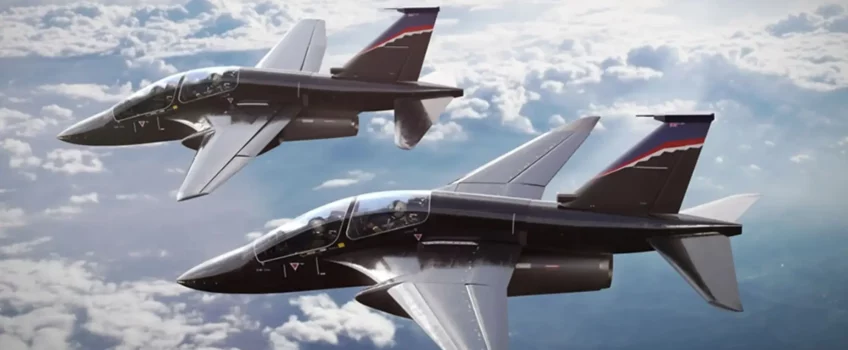
The aeronautics industry is soaring towards unparalleled heights, constantly evolving with innovations that not only break barriers but also reimagine the very essence of flight. One such game-changing development comes from Bristol-based Aeralis, a company that has not just launched a new aircraft, but rather a revolutionary modular jet concept that’s set to redefine the aviation landscape.
The Genesis of the Modular Jet Concept
At the heart of Aeralis’s innovative offering is the “Common Core Fuselage” (CCF). Envision this: a fundamental structural unit equipped with integrated modular avionics that can effortlessly be tailored to an array of requirements, be it for training, surveillance, or even combat. Sounds like science fiction, doesn’t it? Well, not anymore.
Cockpit Customisations: From Training to Electronic Warfare
Diving deeper, the modularity of this modular jet concept is manifest in the cockpit configurations. Need a two-seat tandem setup for training? You got it. How about a single-seat cockpit that optimises space for additional fuel storage or specialised electronic warfare equipment? That’s possible too. Or, imagine a scenario devoid of any human intervention, an entirely unmanned aerial system. With Aeralis, the realm of possibilities is virtually boundless.
“We’re not selling an aircraft, we’re selling a whole system,” opines Aeralis’s Chief Airframe Engineer, Peter Curtis. He further elucidates on the larger vision, emphasising how their modular jet concept prioritises the commonality of structures, systems, and parts, with a sprinkle of modularity to cater to bespoke needs.
The Art of Interchangeability: Wings and Engines
When we talk about aircraft, the wings often dominate the conversation. With the inner wing being a consistent element across variants, Aeralis’s outer wing options are vast, ranging from designs tailored for high-lift, long-endurance flights to those optimised for high transonic speeds.
The engines, too, aren’t left behind in this modular jet concept revolution. With swappable engine pods, Aeralis promises compatibility across single, twin, and large engines, emphasising adaptability over rigidity.
Collaborations and Investments: Setting the Stage for the Future
A concept of this magnitude demands robust partnerships. Aeralis has been proactive in this domain, partnering with industry giants such as Honeywell, Rolls-Royce, and Siemens. Financially backed with an investment of around US$13 million from a Middle Eastern sovereign wealth fund and securing contracts with the UK Ministry of Defence, the company’s trajectory looks promising.
Considering the vastness of the aviation sector, Curtis explains the initial focus on the advanced jet trainer market while emphasising the importance of flexibility: “The trainer market is big…we’ve got to be talking to all of those [potential customers] trying to make sure we’ve got a product that’s good enough for most.”
Recommended: Precision Engineering in Aerospace Manufacturing
Beyond Aviation: The Larger Implications of the Modular Jet Concept
Aeralis’s modular jet concept transcends mere aircraft design, hinting at a future where commercial operations can repurpose jets based on contract requirements. Picture this: jets used for training Typhoon pilots could be reconfigured in a matter of weeks to cater to F-35 Lightning pilots. The operational flexibility here is unprecedented.
Furthermore, Curtis speaks about the inclusivity of the cockpit design, aiming to accommodate a wide range of pilot sizes, thereby ensuring optimal functionality and safety.
Closing on a futuristic note, Aeralis is already envisioning the possibility of adapting their jets for aircraft carrier operations, highlighting the limitless potential of their concept.
In Conclusion…
The Aeralis modular jet concept is not just an aircraft; it’s a statement, a challenge to conventional thinking, and a beacon for future innovations. Will this redefine how we perceive aircraft? Only time will tell. But one thing’s for sure: with its vision of interchangeability, adaptability, and operational efficiency, the skies have never looked more exciting. As we stand at the cusp of this aerial revolution, one can’t help but wonder, “What’s next?”
With the myriad of possibilities this presents, could Aeralis’s innovative approach be the solution to the challenges of modern-day aviation? In a world where adaptability is paramount, this modular marvel might just be the answer we’ve been waiting for.
If you liked reading about this impressive modular jet concept, please follow our weekly blog as we write about all things technology, engineering and manufacturing. For more information about what PRV Engineering does, visit the website or give us a call on 01495 769697.


 Mail:
Mail: 



